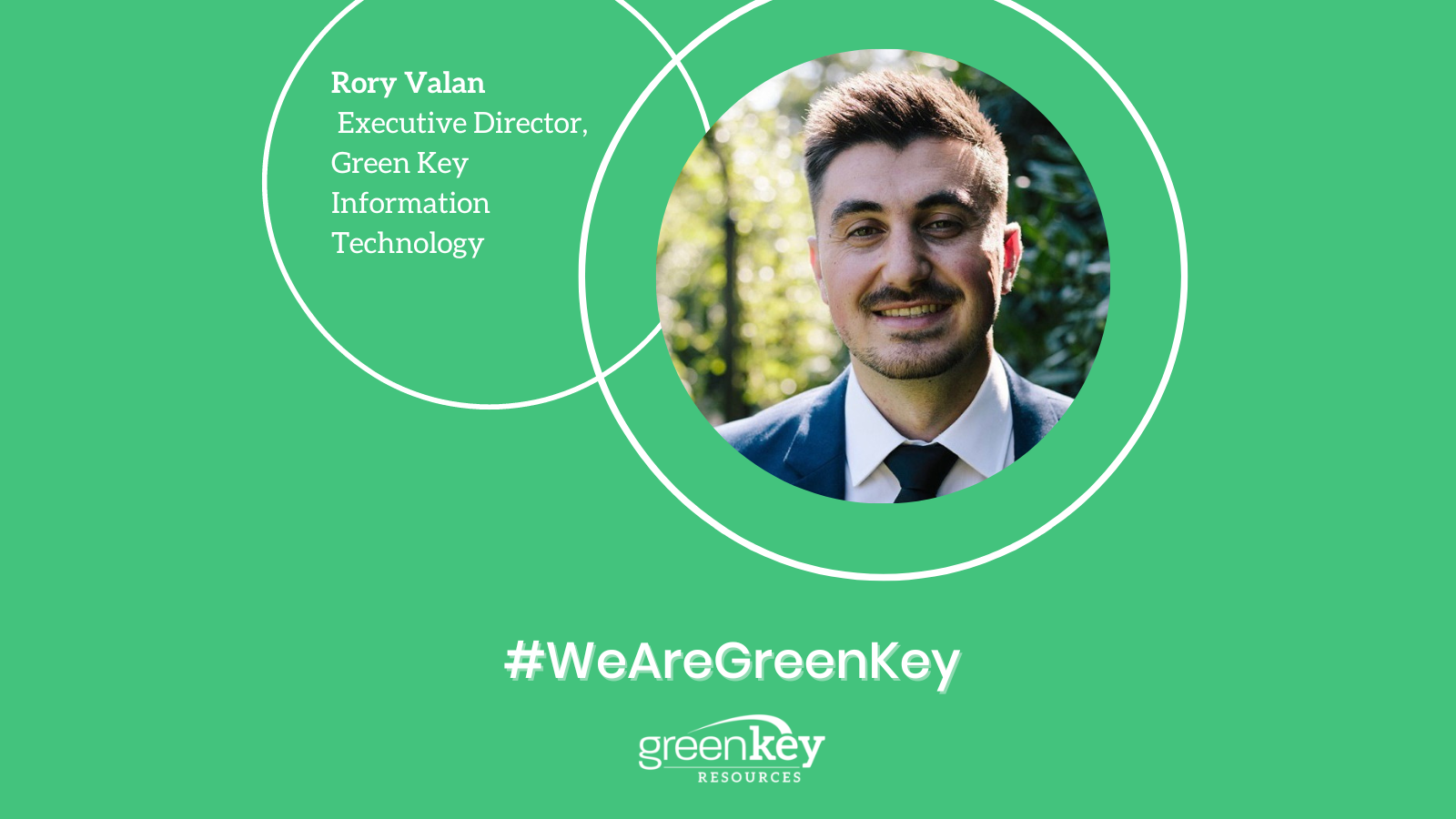Welcome back to #WeAreGreenKey, where we shine a spotlight on our powerhouse recruiting team.
We chatted with Rory Valan this week, Executive Director on the Information Technology team on Long Island. With previous experience in both sales and recruitment, Rory came to Green Key prepared to expand his knowledge in tech, while also building his team’s portfolio. He shares which positions are trending in the tech industry right now and why IT teams are so valuable within an organization.
How did you get your start in tech recruitment?
I started out in 2014 in transaction sales at a furniture store. My colleague’s girlfriend was working for a tech company and she felt, based on the line of work I was in, that I would be a good fit for recruitment. I didn’t know much about it, but she got me an interview, which eventually landed me a position. That was where I got all my formal training and immersed myself in the tech industry. I was there for about ten months before coming to Green Key in 2015.
Which tech roles are in-demand right now?
Cloud engineering is a big initiative right now. A lot of companies want to move into the Cloud, because it’s a great way to maintain their data in one location. It’s a higher cost to get into the Cloud, but they’ll save a ton of money in the long run. It’s a way for them to keep reliable and secure data, which essentially helps to run a more efficient business. Data engineering is also in-demand right now.
In terms of certifications, AWS, Azure, and GCP are all helpful to obtain, depending on the needs of the company. AWS Cloud Practitioner is great for entry-level candidates who want to take their first step into this field.
What’s the remote culture right now in tech?
We work in the financial services industry pretty heavily, and a lot of clients in the finance sector are making a strong push back to the office. It’s a push and pull right now between clients and candidates. Candidates are hoping for fully remote and hybrid schedules.
How do you feel tech roles and departments enhance a company’s business practice?
It’s the future. Technology will shift the way we work because it’s integrated into everything. AI is popular right now. Companies are able to gain a lot of data by utilizing machine learning. Target marketing and procedures are more automated now; overall, businesses have become more efficient and aware of what to spend their time and money on.
How does your team collaborate and integrate training?
We work on a hybrid schedule, which is great because it’s important for everyone to pick up on the tech lingo and culture. Justin [Nadelman] and I created a Word document breaking down all the different positions and skillsets among which categories they fall under, depending on whether they’re on the infrastructure or application side.
Do you and your team have any goals for the rest of the year?
Our main goal is to diversify our business. Right now, we deal heavily with the finance space and I want to expand from that. It’s good to have a diverse portfolio; in the chance that a certain industry is scaling back, another might be thriving. You always want to be prepared and valuable within different industries.



